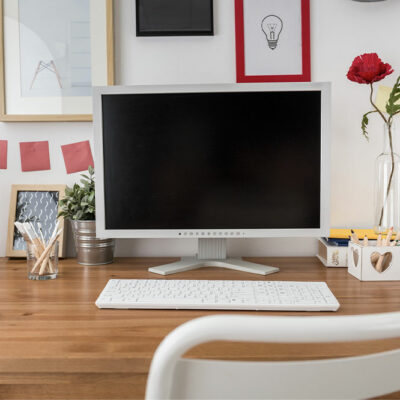
Top 7 banner design mistakes and how to avoid them
Using banners is an efficient way to promote a business and its offerings. The design of a banner can significantly influence how potential customers and clients perceive a company and its offerings, so it’s necessary to get it right. Elements such as visual appeal, presentation of information, and amount of information conveyed all play a key role. To help businesses improve their banner designs, here are some common mistakes to avoid.
Incorrectly spelled words and typos
Typos, misspellings, and grammar mistakes represent the rookie errors one could make while designing a banner. Typos leave a wrong impression on viewers, especially when they see it on a reputed site. Additionally, such mistakes can completely negate all the effort that copywriters, designers, publishers, and media teams put into conceptualizing, ideating, and creating a banner.
Spelling mistakes also badly derail the messaging aspect of a banner. For instance, consider a situation where the term “mother’s destiny” on a healthcare-based product is misspelled as “mother’s density.” The audience will simply not get what the banner is trying to convey.
Moreover, typos and grammar errors on a banner also make the viewing audience feel that the business does not care enough for its image in the public eye. If that is the case, it is perceived that the company would not care about its customer’s interests and grievances later too.
To avoid this issue, creators must ensure that at least two or three copyeditors review their banner’s text.
Irrelevant poor-quality images
Visual content is usually a sure-shot way to engage audiences. Images and videos do more to catch hold of audiences’ attention than text-based content. A person’s eyes first land on the images on a banner. As it is integral to a banner’s success, poor-quality images (or irrelevant ones) can severely disappoint a viewer. Additionally, people would not bother to read the text on a banner if the image quality is inferior.
So, designers must use original, high-quality images that contrast nicely with a banner’s colors and overall design. They must ensure that these images are correctly visible to audiences.
Designers should refrain from using stock images from the internet. Taking care of such things makes a company’s banner the perfect platform to showcase the products, services, and features visually.
Too much clutter
Everyone may have encountered a banner or billboard cluttered with information and multiple design ideas at some point in their lives. With so much going on in these billboards, audiences might not figure out the exact message of the banner.
Usually, designers are given too much information to fit into a banner. This naturally tends to overwhelm them, resulting in the creation of banners that are cluttered with data. Fortunately, businesses can sidestep this problem by limiting the number of words and ideas on one banner. Instead, a full-fledged marketing campaign with multiple subsequent banners can present the ideas phase-by-phase to the audiences. Furthermore, a banner could link to other landing pages where all the information is presented straightforwardly.
A banner should always be a focal point for one great idea or design concept rather than an array of them.
Incorrect color usage
Error-free text and clutter-free design form the basis of a great banner. After those two, color is a critical aspect of banner design. Visual marketing has relied on color codes for decades to establish moods and brand identity. As a result, a banner will not be as effective if the “right” colors are not used in their design. Apart from affecting the readability of a banner, the wrong colors also fail to evoke the required feelings and emotions in audiences as intended by the banner’s creators.
To prevent this problem, designers must pick a color scheme that does not blend in with the surroundings. Apart from that, one can use color psychology to use only those colors on a banner that will capture audiences’ attention.
Complicated messaging
This is the other kind of clutter that plagues any banner. Banners need to convey their message in as few words as possible. This ensures that marketing or brand-related information is conveyed at the audience’s first glance. If that is not done, people who pass by the banner will not care to read or delve into it further. Remember, most people who see a banner may have a few seconds to see the images and read the text put on a banner.
Regarding banner design, one must not forget that “less is more.”
Lack of contact information
When designing a banner, it’s crucial to avoid making certain mistakes. One of the worst mistakes to make is forgetting the primary purpose of a banner, which is to encourage audience engagement with an organization. To achieve this, banners should include contact information. This enables people interested in the ideas on the banner to reach out to the company’s representatives and learn more about them.
Failing to include contact information on a banner disregards the hours of research that the marketing department put into keeping up with current UI/UX trends. It also nullifies the target audience psychology study conducted during the banner’s creation. In essence, omitting the company’s contact information from a banner is like reading a captivating novel that ends abruptly without a conclusion.
The lack of contrast
As implied earlier, contrast helps audiences see what they are supposed to see on a banner more clearly. So, using identical colors, text fonts, or images on a banner makes the whole thing monotonous and not catchy enough for audiences. Therefore, one must properly contrast their banners while designing them.
To ensure consumers understand your business, product, identity, and service accurately over time, it’s important to maintain consistency with brand conventions and standards. Stick to the established guidelines to establish a strong and recognizable brand.


